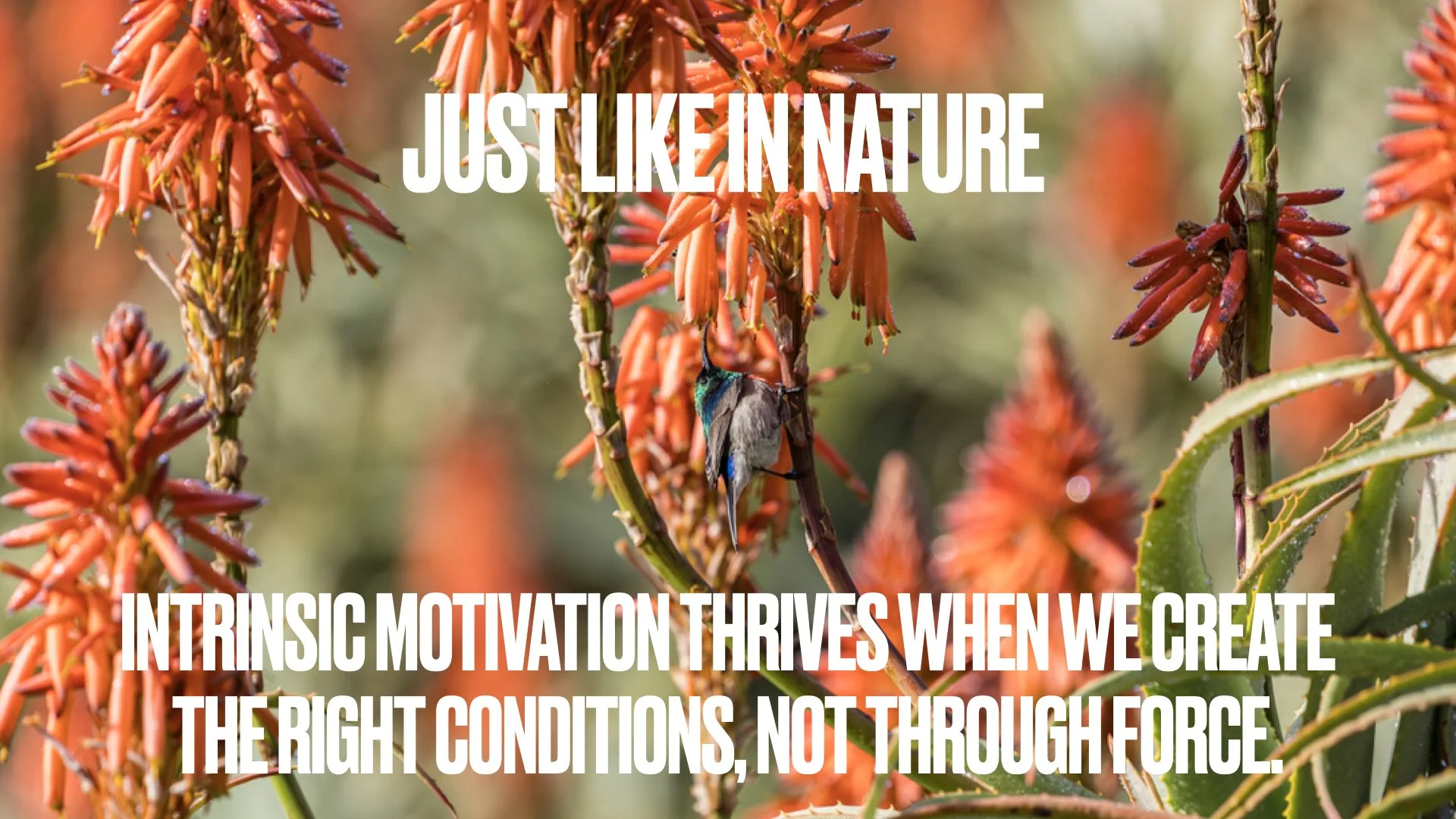How Leaders (Often Unknowingly) Destroy Motivation — And How to Build It the Right Way
Understanding the Motivation Continuum to Create Thriving, High-Performing Teams
Too many companies still rely on external motivators:
→ bonuses, pressure, fear, rigid control.
It works — in the short term.
But in the long run, this approach damages ownership, learning, creativity — and ultimately, the very culture of the organization.
Here’s the core leadership challenge:
You cannot “buy” real motivation. You can’t force people to care.
But you can absolutely create the right conditions for motivation to thrive — or unintentionally kill it.
Why Motivation Is Not Binary
Many traditional management models view motivation too simplistically: either you’re motivated, or you’re not.
But modern research — especially Deci & Ryan’s Self-Determination Theory — shows that motivation is a continuum.
Where your team operates on this continuum directly impacts resilience, innovation, engagement, and long-term business outcomes.
The Motivation Continuum: Where Does Your Team Sit?
1 Amotivation
A state of no motivation → apathy, disengagement, disconnection from the work and its meaning.
Symptoms: lack of energy, cynicism, presenteeism, burnout.
2 External Motivation
External regulation:
“I must do this — to earn a reward or avoid punishment.”
Introjected regulation:
“I should do this — to avoid guilt or protect my self-worth.”
Outcomes:
Minimal compliance
Fear-based performance
Low creativity and initiative
Fragile self-esteem and mental health risks
Unfortunately, many businesses still operate largely in this zone — through rigid KPIs, micromanagement, and pressure-driven “motivation.”
3 Internal Motivation
Identified regulation:
“I do this because I value it and see its importance.”
Integrated regulation:
“This aligns with who I am and my personal values.”
Outcomes:
True ownership and accountability
Proactive learning and growth
Resilience in the face of challenges
High-quality collaboration and trust
This is where strong, healthy, sustainable performance begins to emerge.
4 Intrinsic Motivation
“I do this because it’s enjoyable, meaningful, and deeply interesting.”
Outcomes:
Creativity and innovation
Deep engagement and flow
Authentic commitment to both team and organizational mission
Positive emotional climate across teams and departments
This is the ideal state — but it requires intentional leadership and culture design to cultivate.
The Leadership Challenge: Every Interaction Shapes Motivation
Most leaders underestimate how much their day-to-day actions impact motivation:
✔ How goals are communicated
✔ How feedback is given
✔ How autonomy is respected (or restricted)
✔ How trust is built (or eroded)
Every conversation, meeting, and system either moves people up or down this motivation continuum.
Practices That Undermine Intrinsic Motivation:
✔ Micromanagement
✔ Excessive control and rigid targets
✔ Lack of transparency around purpose
✔ Low autonomy
✔ Inconsistent feedback or focus only on weaknesses
Practices That Strengthen Intrinsic Motivation:
✔ Autonomy and meaningful choice
✔ Clear connection to purpose and values
✔ Honest, supportive, and balanced feedback
✔ Psychological safety and trust
✔ Encouraging reflection and self-driven growth
Why This Matters — Especially Now
In today’s fast-changing, knowledge-driven business world, companies that rely on external control are at increasing risk:
They burn out talent.
They kill innovation.
They create fragile, transactional cultures.
By contrast, companies that intentionally cultivate internal and intrinsic motivation develop:
Adaptive, resilient teams
Strong learning cultures
Deeper engagement and loyalty
Sustainable high performance
Reflective Questions for Leaders
Where does your leadership culture currently sit on this continuum?
What signals are you sending — through words, systems, and behaviors — about what truly matters?
What one shift could you make this week to better support intrinsic motivation in your team?
Just like in nature — intrinsic motivation thrives when we create the right conditions, not through force.

